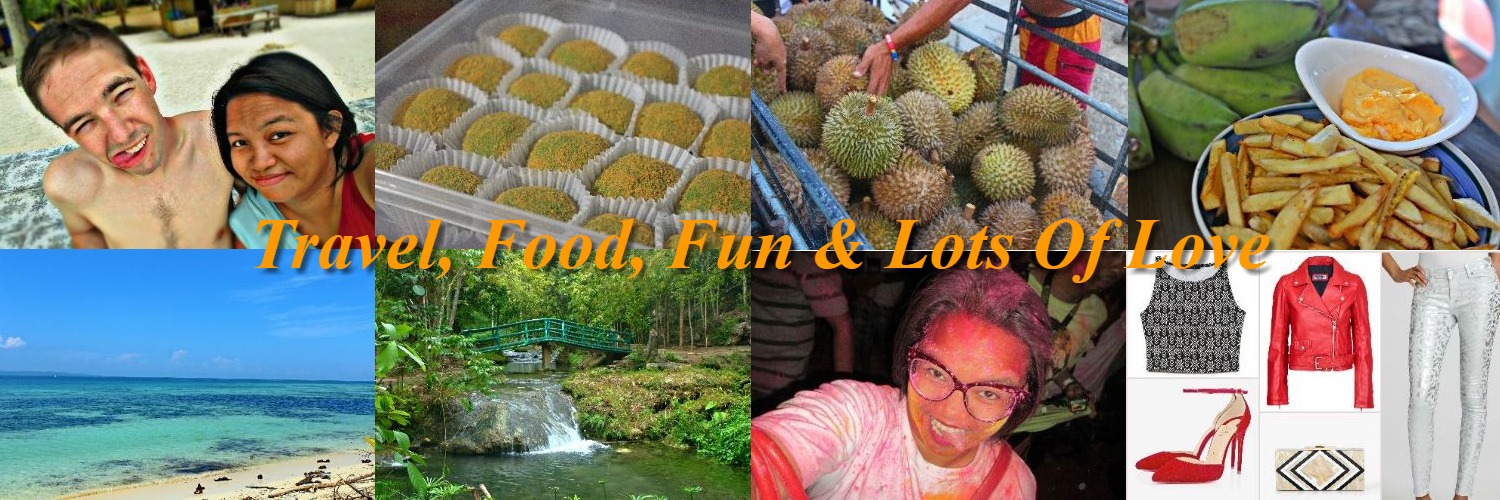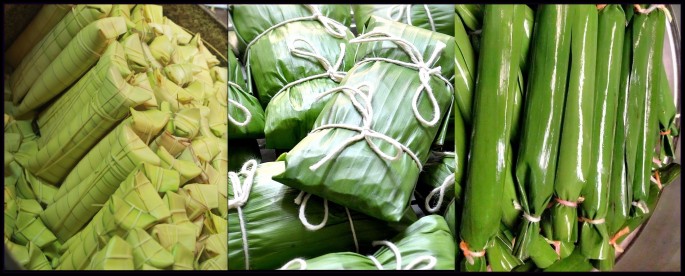Simplicity at its finest! Most Filipinos are wooed by the western pastries, from muffins, cupcakes, pies to fancy cakes. This time let’s introduce the Philippine sweet cuisine to those who are curious enough to take a peak on some of the Filipino confections that I believe many of the munchies from the west side of the world would surely enjoy. We Filipinos are simple so we also have simple and enticing cuisine.
Sapin-sapin
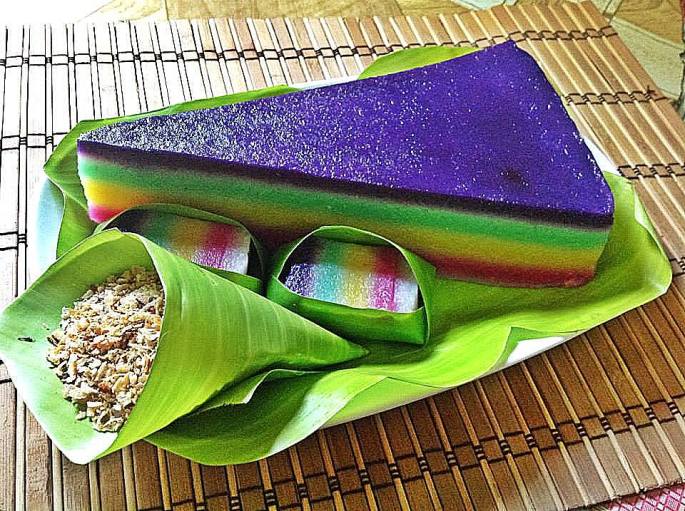
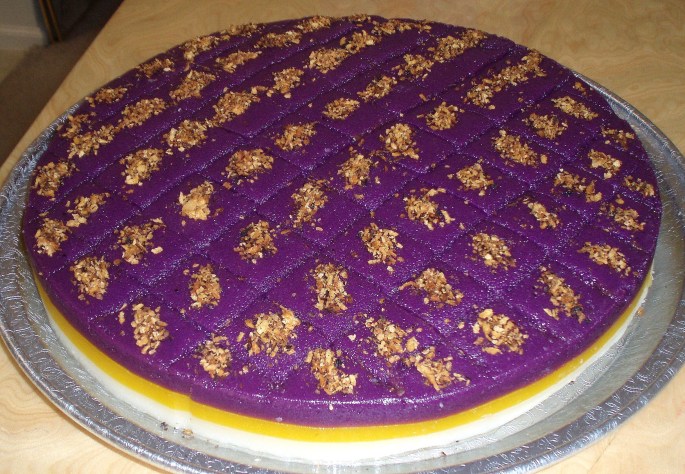
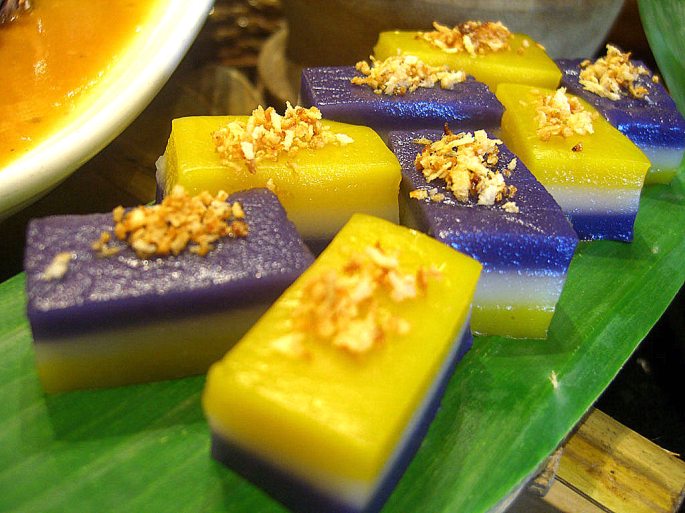 Pictures above is what we call Sapin-Sapin, it is made of glutinous rice flour that can be shaped, condensed, layered and be in different colours similar to Mochi of Japan and Tteok of Korea. There’s no wonder why there’s a resemblance, because rice is prevalent in all Asian countries and we Asians share many ethnic cultures, including the cooking methods. All Asian countries has its own excellent glutinous rice and coconut sweet course cuisine. Mochi and Tteok tastes almost the same as Sapin-Sapin, it only differs on the level of stickiness and both comes in fancier shapes and designs than Sapin-sapin. This is one of the must-try delicacies in the Philippines.
Pictures above is what we call Sapin-Sapin, it is made of glutinous rice flour that can be shaped, condensed, layered and be in different colours similar to Mochi of Japan and Tteok of Korea. There’s no wonder why there’s a resemblance, because rice is prevalent in all Asian countries and we Asians share many ethnic cultures, including the cooking methods. All Asian countries has its own excellent glutinous rice and coconut sweet course cuisine. Mochi and Tteok tastes almost the same as Sapin-Sapin, it only differs on the level of stickiness and both comes in fancier shapes and designs than Sapin-sapin. This is one of the must-try delicacies in the Philippines.
Halo-halo
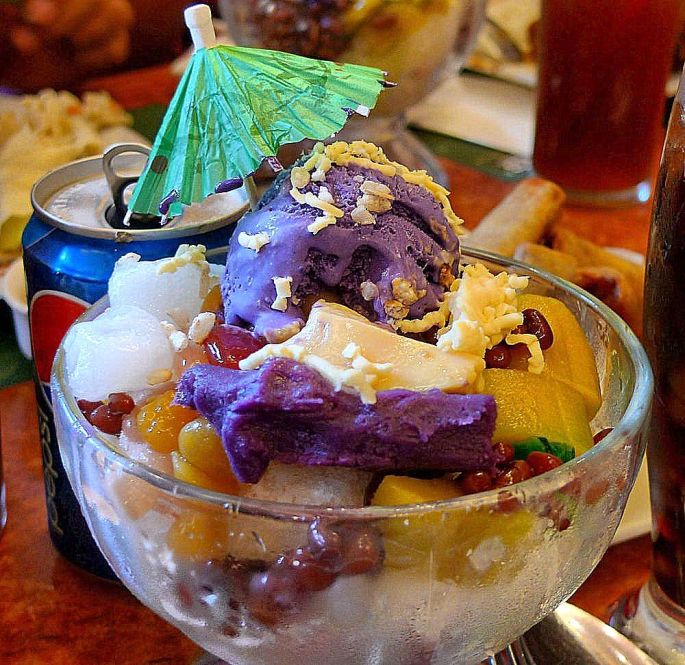
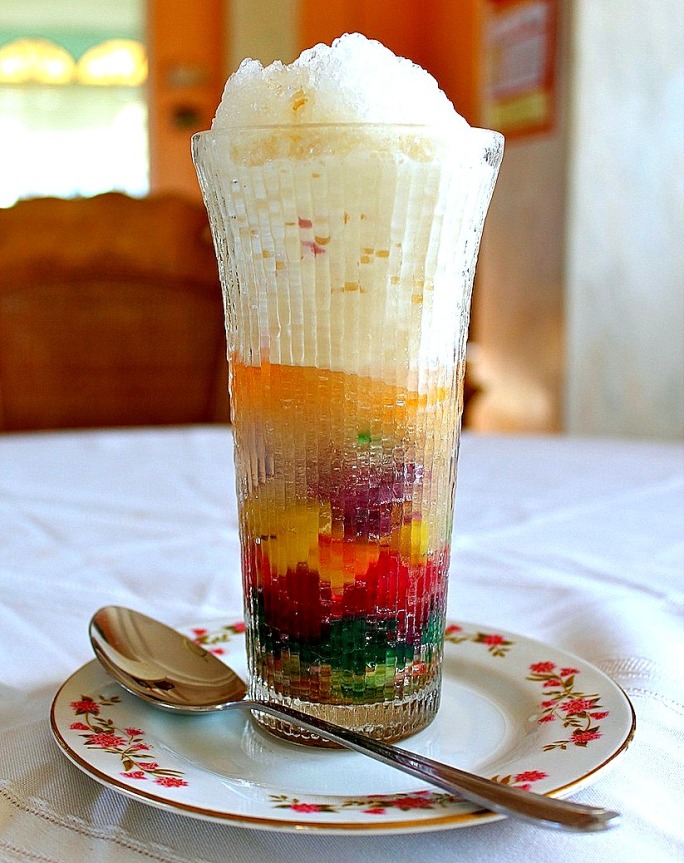
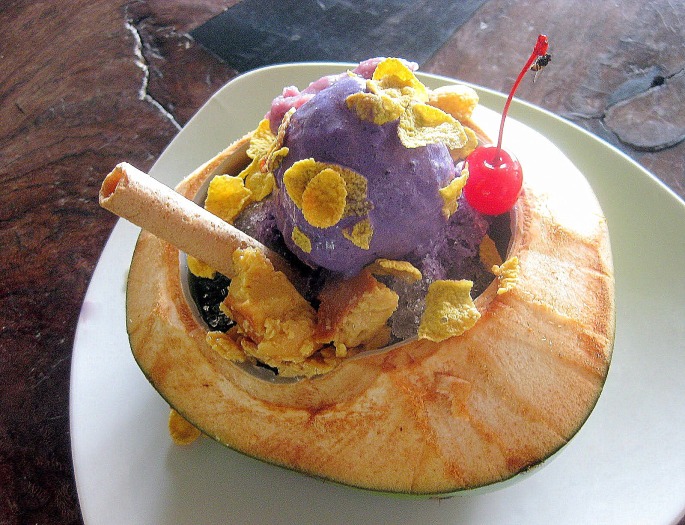
Who could go wrong with this tropical frozen delight? The pictures above shows the Halo-halo which means in Filipino language “mixed together,” well, you can see the bunch of edible stuff smacked on top of each other in a large glass bowl or a long cocktail glass – for added tropical feel, serve it in a coconut shell! Halo-halo has a crazy concept of mixing whatever sweets from kidney beans, jello, purple yam, jackfruit strips, rice krispies, leche flan, fruits, ice cream, corn cereal flakes and whatever you can think of adding. All of these are piled atop of or under shaved ice, then poured with evaporated milk.
Yema
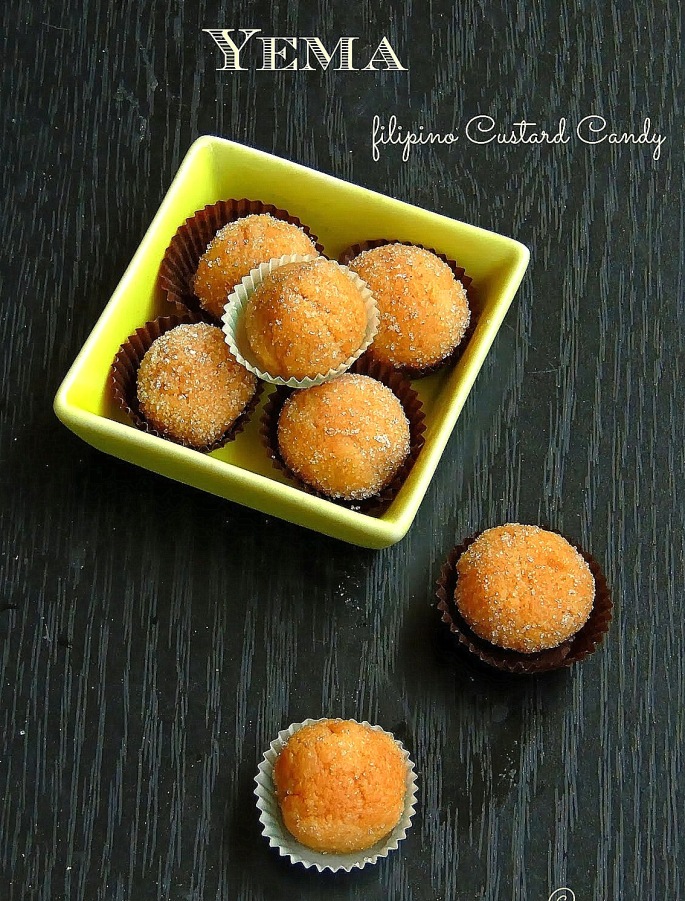
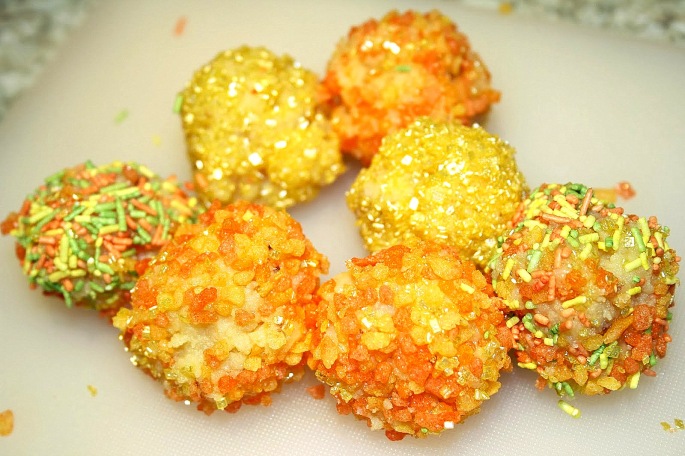
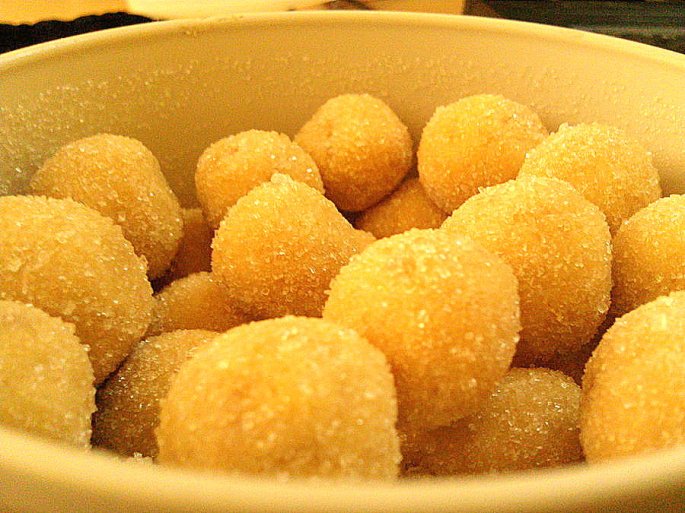
This Asian version of custard candy is the easiest to make among all the Filipino desserts I know, this was our school project when I was just 8 years old! Yema maybe simple because it’s just egg yolks and condensed milk, but it never fails to give Filipino kiddos the milky smile of joy :). This gooey candy is so versatile many designs of it were created and it even collaborates well with other pastries. I saw some excellently decorated yemas that look like edible gems!
Suman
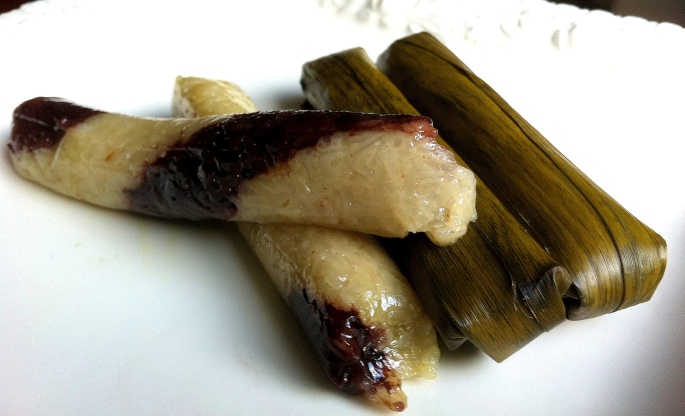
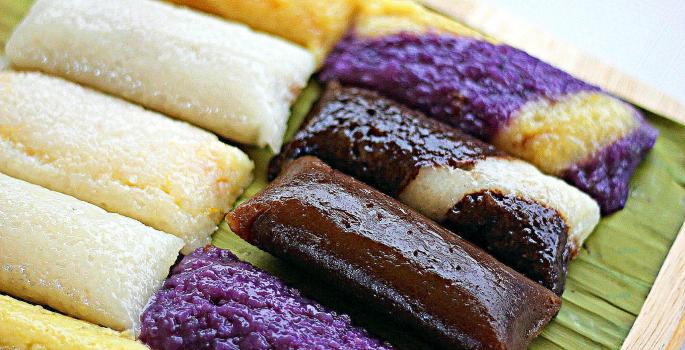
The epitome of the classic Filipino dessert, Suman comes in different types and nowadays many have made many versions of it, some fancy Filipino restaurants serves this with such artistic presentation that you wouldn’t believe a simple Suman could look expensive. They have different flavours, textures and even the way they are wrapped in banana leaves. This tasty treat could be with twirled cocoa chocolate or what we call tablea or purely tablea-based, they can also be in purple yam flavour or the original coconut with a hint of ginger. The texture depends on the kind of Suman, they can be made with something other than rice like cassava.
Buko Pandan
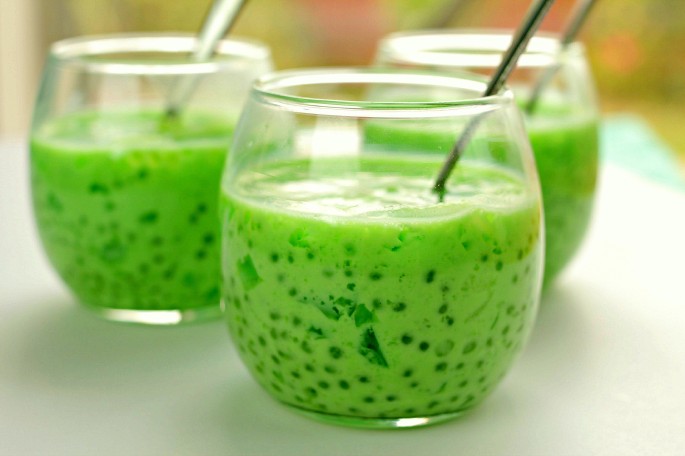
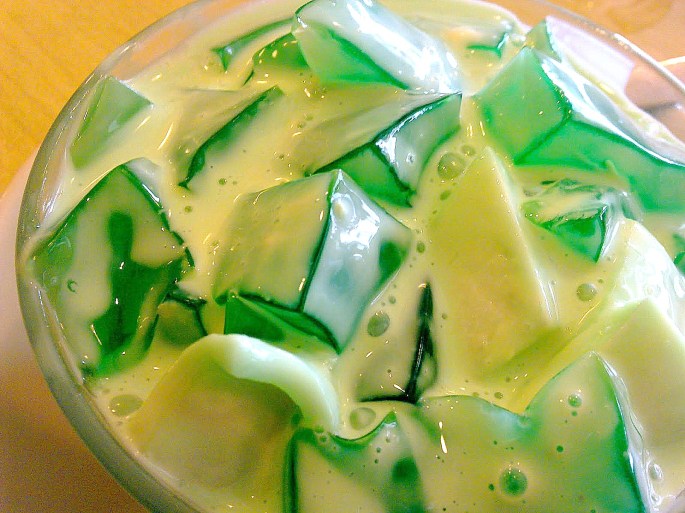
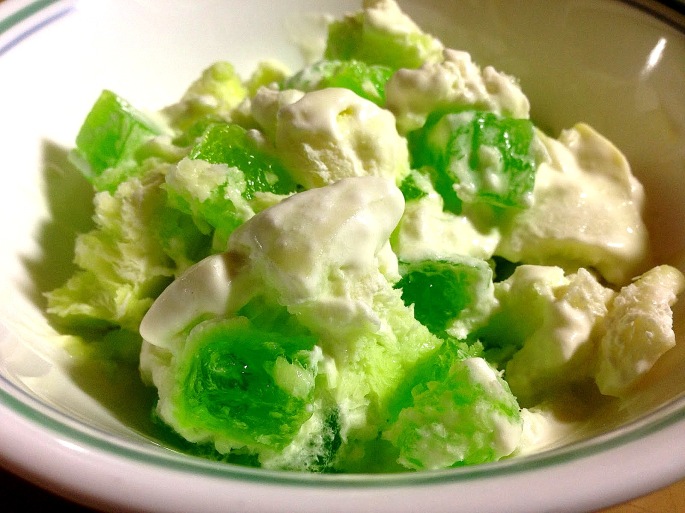
This definitely gives me the zing that makes my heart “whoosh” with joy! It tastes as yummy as it looks, thank you BOHOL for creating such an icy-licious dessert that completes every Filipino parties. The vibrant green colour that contrasts well with the coconut strips and milky thick juice is because of the screwpine or pandan flavoured gelatin. There are optional additions on buko pandan dessert, for pearl shakes some add rice flakes or cheese bits.
Latik (On Biko or Kalamay)
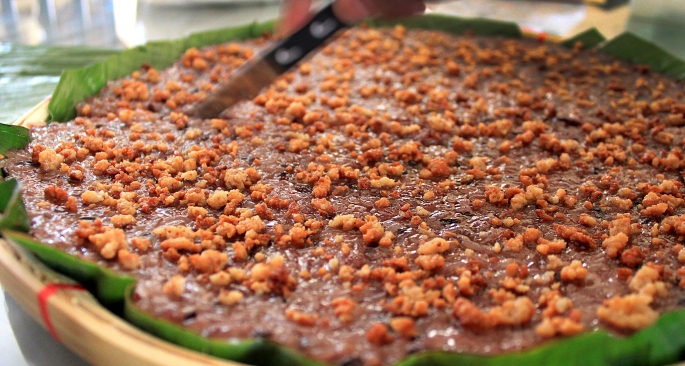
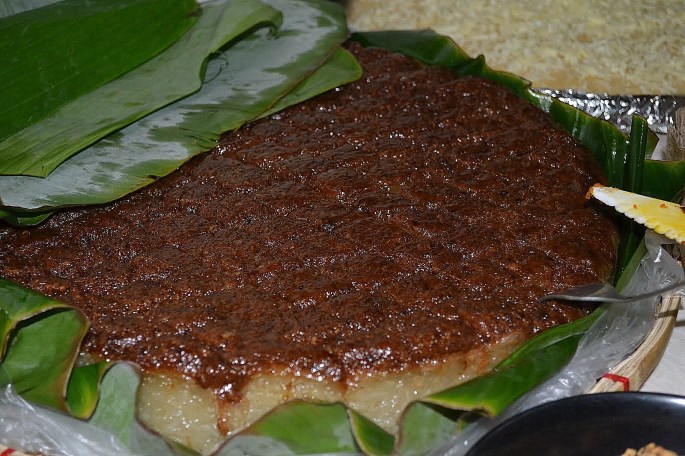
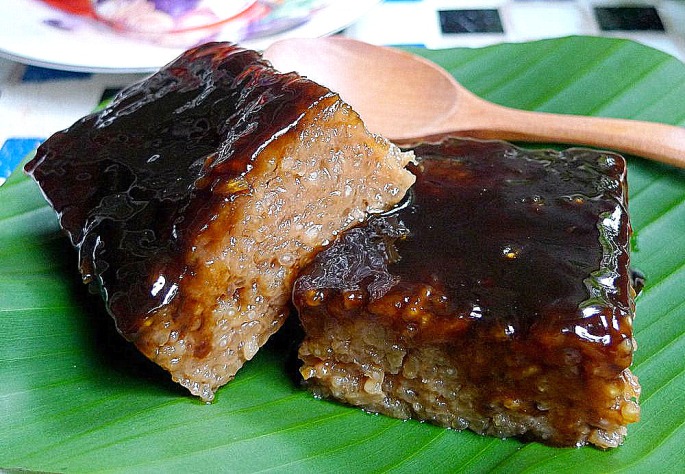
Kalamay with Latik or Biko with Latik! Anything with Latik gives the rice cake a delicious kick! My 2nd favorite after the leche flan. the pictures may look like just a simple glutinous rice cake but that shiny brown caramel topping that melts on top of the sticky rice is what makes this rice cake a stand out dessert. Latik is a coconut residue that transfigures from oil to syrup when cooked with brown sugar. This condiment not only has a distinct sweetness it also has an inviting smell, I always beg my mom to cook this for me every time I go visit them back in my hometown 🙂 .
Leche Flan
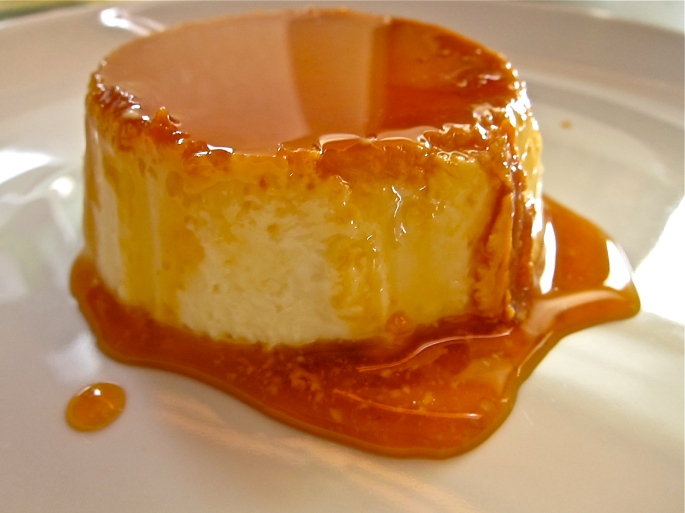
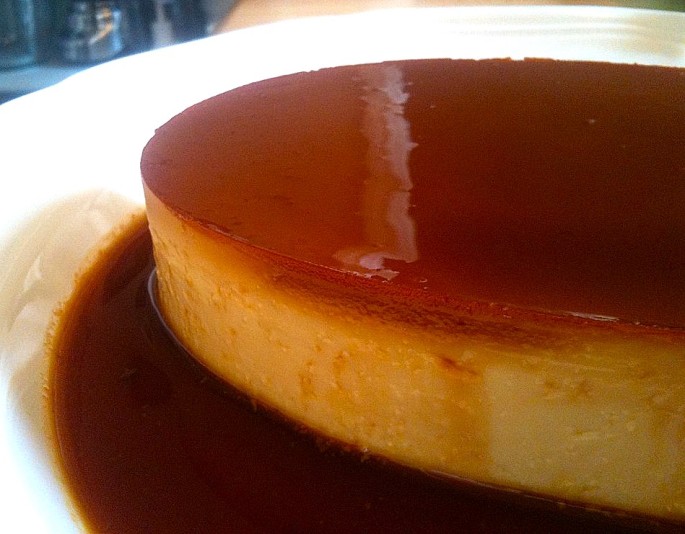

This delicacy originated in Rome but then became a much more popular recipe shared by Latin America and Spain. I consider this sweet course as the most sinful confection in the Filipino dessert cuisine. The mouthwatering, milky-licious leche flan is tough to resist, its soft and creamy texture and even its simple presentation has that inexplicable appeal. OMG! this succulent Filipino dessert melts in your mouth and will bring out the kid in you 🙂 ( at least that’s what I feel when I eat this.) If you are wondering what separates this flan from the flans of other countries is we don’t add vanilla extract or heavy cream.
Pichi-pichi
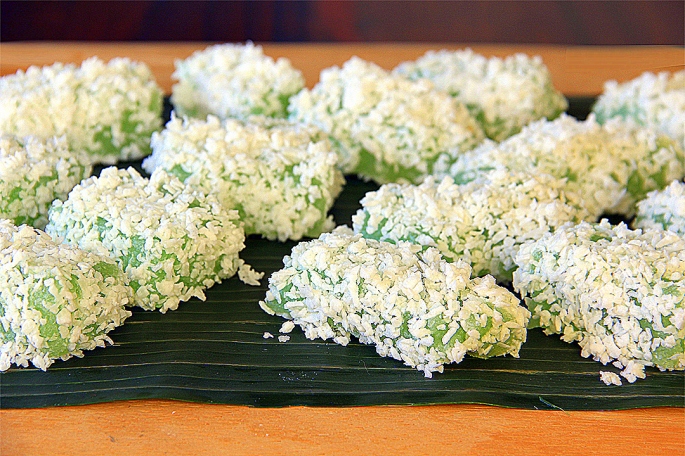
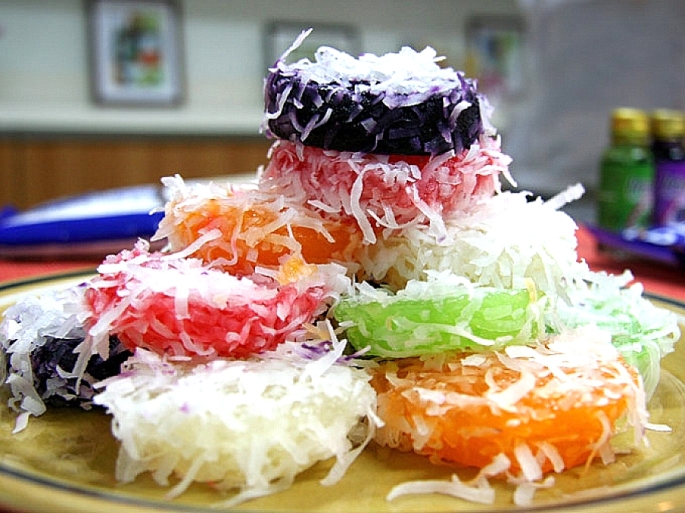
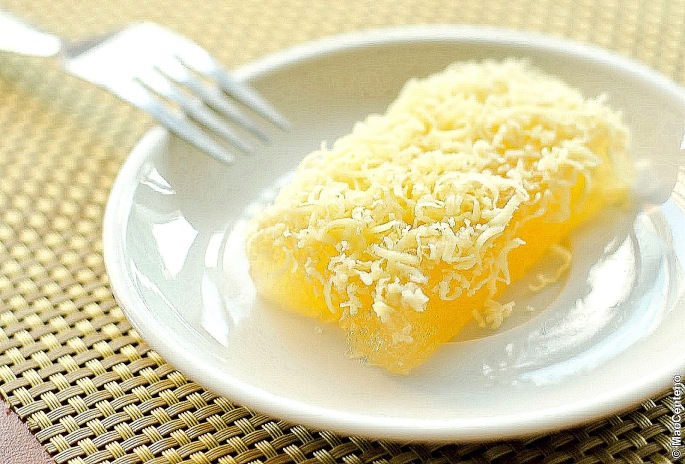
My mother’s all time favorite, the gluey Pichi-pichi!! This sticky grated cassava comes in different shapes and in different colours too. The original recipe uses just the grated coconut meat as a coating but many Filipinos now are adding grated cheese too that gives this classic dessert a twist – just the way I like it! Yum yum!
Ginanggang Maruya
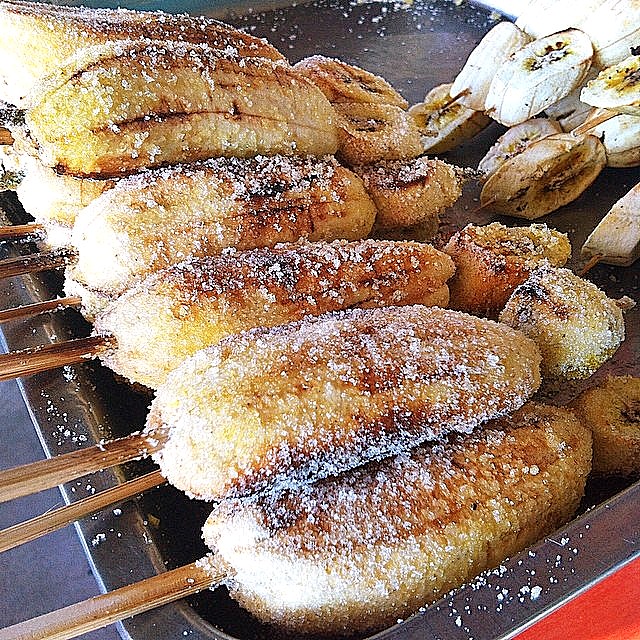
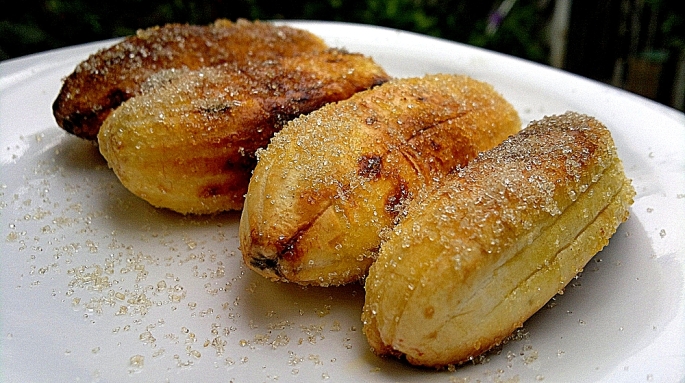
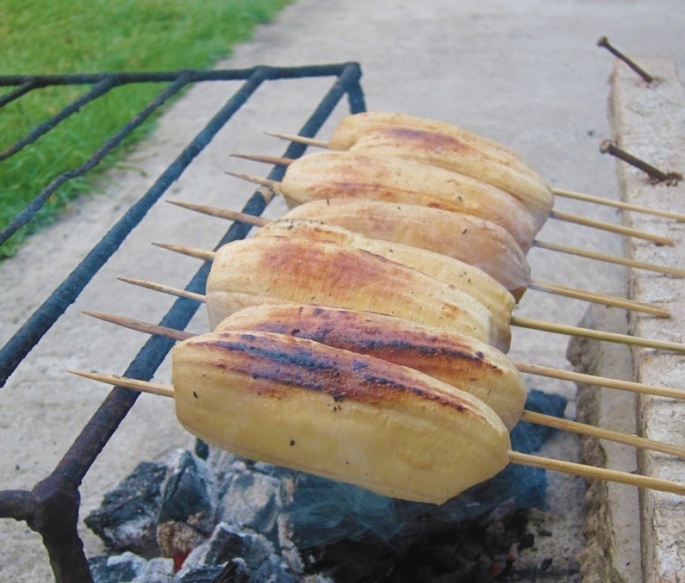
The counterpart of banana cue! I personally choose ginanggang over banana cue. The difference of the two skewered cardaba bananas (besides the funny name lol) is the cooking procedure. Banana cue is deep-fried and in the process of frying, brown sugar is added for continuous mixing until the banana is coated with caramelized brown sugar. The last part is skewering the finished product in a bamboo stick For ginanggang however, the cardaba banana is already skewered before placing it on a charcoal barbecue grill. The cooking method is barbecuing the unripe cardaba banana until the outer surface is lightly singed. When it’s cooked brush it with margarine and sprinkle it with white sugar before serving it. While Banana cue is popular in Luzon region, Ginanggang is popular in Visayan and Mindanao regions, I grew up eating this local snack back in my home town Davao City, and will remain one of the best snacks you should try 🙂 .
Ice Candy
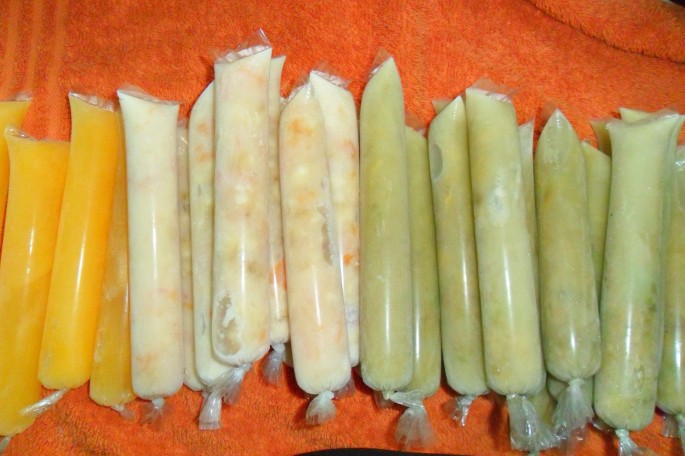
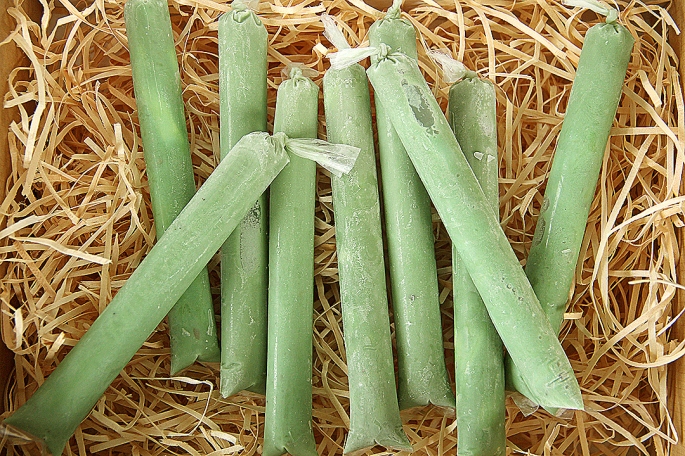
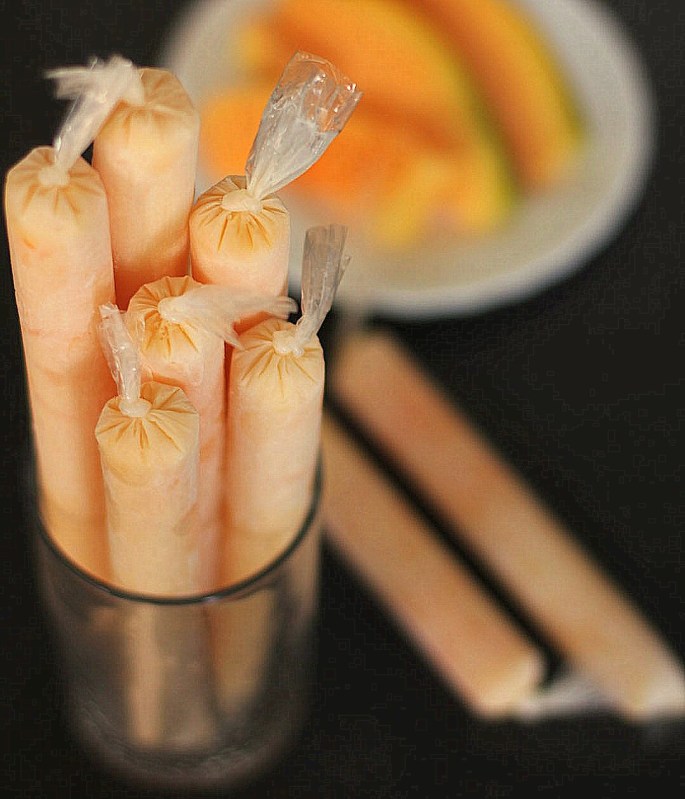
Ice candy! The idea of the existence of this ice cream substitute is satisfying the cravings for a frozen dessert without causing tears to your wallet. Ice creams aren’t cheap and not all people especially those with very limited budget would want to spend 150 philippine for a sherbet. Ice candies are easy to make and very affordable, all you need to prepare is a can of condensed milk, any type of fruits or even just the milk alone or the local chocolate TABLEA, coconut juice and sugar. Some would improvise it by using other dairy products such as all purpose cream and yogurt.
Ube Halaya
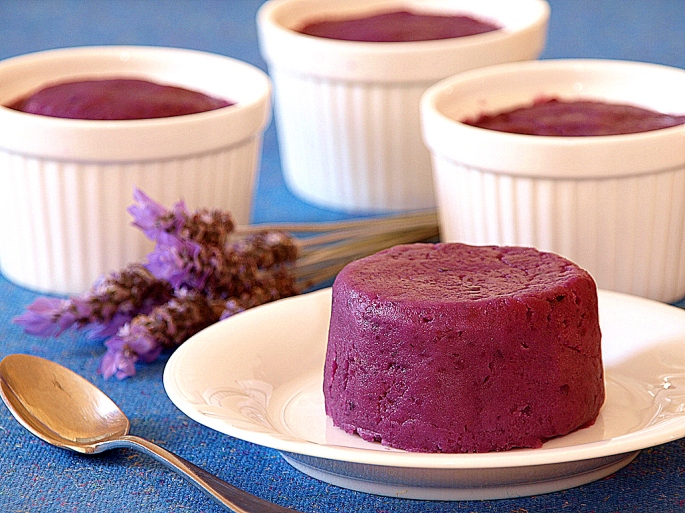
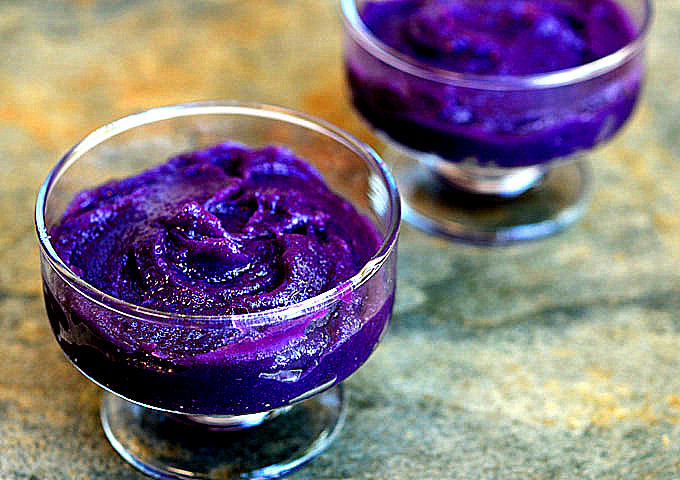
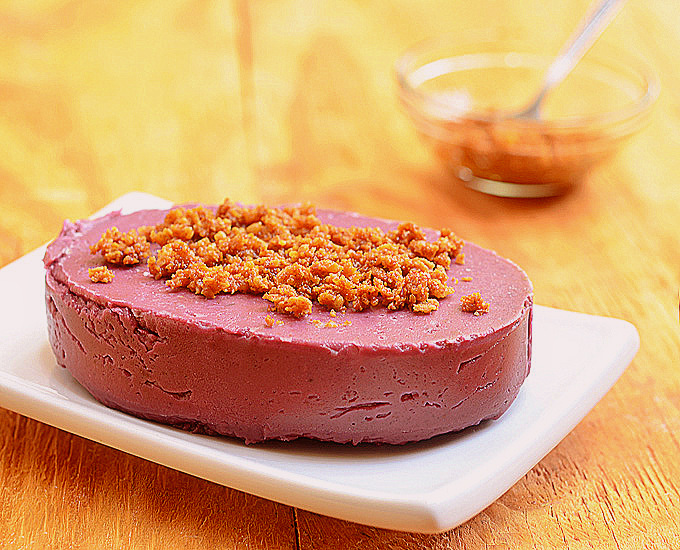
Oh yeah!Ube halaya! Who would think an ugly root crop could become a source of a toothsome treat? One or 3 spoons of this isn’t enough to satisfy your taste buds when you try this awesome purple goody. The best part is, it’s easy to make. All you need are boiled and mashed ube, condensed milk, butter, evaporated milk, vanilla extract and sugar. A good blend of these ingredients under low-heat results this delectable Filipino sweetness!
Brazo De Mercedes
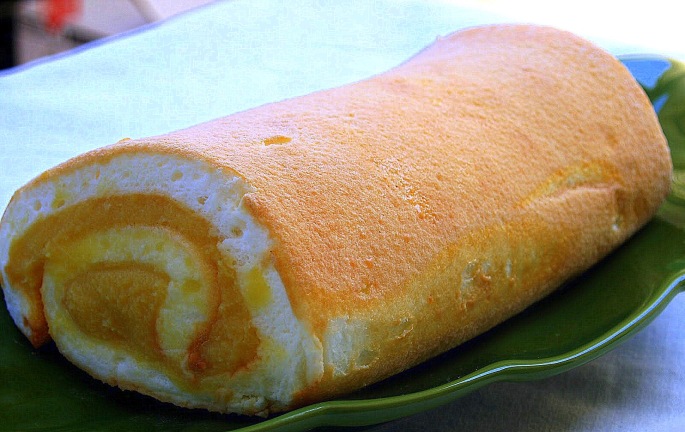
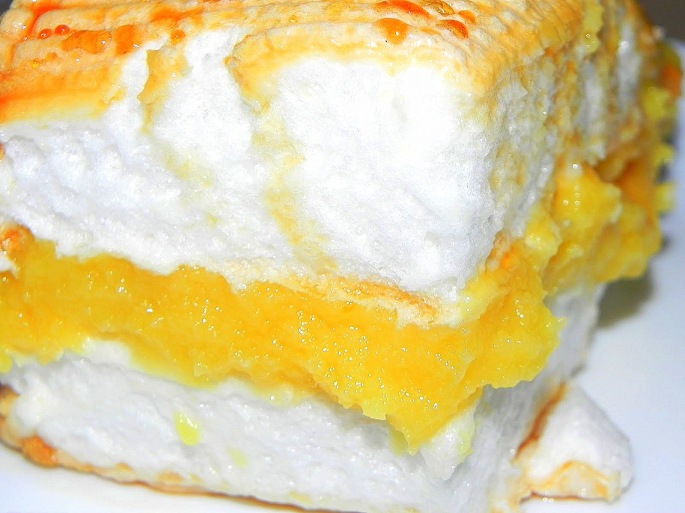
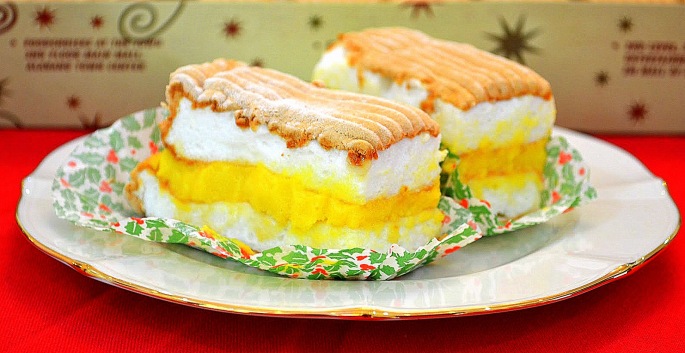
If Spain have Brazo De Gitano, Philippines have Brazo De Mercedes, I find it strange why a swiss roll is named in Spanish when it’s not even originated in either countries. Anyway, Swiss roll is a sponge cake while brazo de mercedes is a meringue made out of egg whites baked, laid flat topped with custard filling then rolled. Just look at that fluffy white stuff with that thick chewy custard filling and you can already imagine how delicious it is!
All these great images are not my own, so feel free to visit the websites that are indicated on each picture, they have the recipes of these delicacies. 🙂
